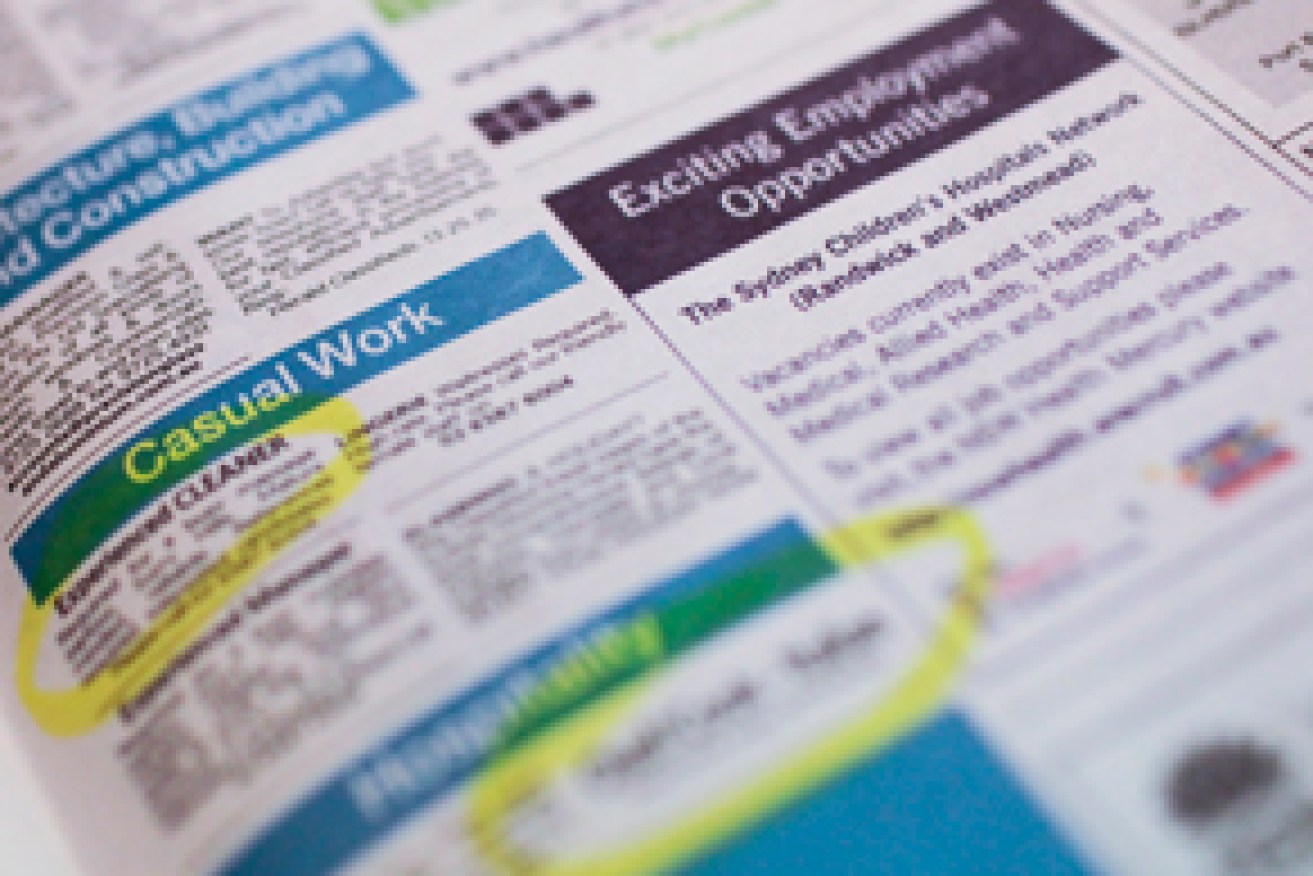Jobless rate falls – along with hours worked, hinting at more gloom to come


Australia's unemployment rate is at its lowest level since March last year. Photo: AAP
The number of people working full-time fell in December, but Australia’s jobless rate still improved by a tenth of a percentage point to 5.1 per cent, according to employment figures.
Full-time employment fell by 300 to 8,834,700 people, but part-time employment increased by 29,200 to 4,146,900 people, according to seasonally adjusted estimates from the Australian Bureau of Statistics released on Wednesday.
The underemployment rate remained steady at 8.3 per cent, as did the participation rate at 66 per cent.
Callam Pickering, an economist with employment site Indeed, said hours worked were growing much more slowly than overall employment.
“Australia is creating a lot of jobs but not necessarily the high-quality high-paying roles that Australians want,” he said.
“The average worker is … working fewer hours than they did a year ago and we must remember that when interpreting employment figures.”
The improvement in the overall rate was welcome, he said, but labour market slack was still much too high.
“It is a major reason why wage growth remains so anaemic. And more progress will need to be made before we begin to see improved wage growth,” he said.
“We are still years away from having a healthy and vibrant economy that delivers for a majority of Australians.”
EY chief economist Jo Masters also noted the elevated underemployment rate.
“The leading indicators of the labour market continue to point to a further slowing in job creation,” she said.
“With the economy already growing below potential, it remains likely that the unemployment rate will drift higher in coming months … Moreover, wage growth is likely to remain anaemic.”
The data meant the Reserve Bank was more likely than not to cut official interest rates in 2020, she said.
But BIS Oxford Economics chief economist Sarah Hunter said December’s slight improvement in the data would reduce the pressure on the RBA board to cut rates when it meets on February 4.
“We still expect them to provide further stimulus, but this could be delayed until March,” she said.
“Delaying would also allow the board to more fully assess the short and long run impact of the bushfires.”
Many businesses, including BHP, have been affected by the bushfires which have ravaged the country and claimed 29 lives.
NAB markets economist Kaixin Owyong also thought the chance of a cash rate cut had fallen.
“With unemployment improving for two months in a row, there is now greater uncertainty over the probability of a February rate cut,” she said.
However, she still expected the Reserve Bank to cut the cash rate twice in the first half of this year.
The biggest increases in employment for December were in NSW (20,600 people) and Victoria (10,300 people).
Western Australia recorded the biggest decline (5,300 people).
The result comes after consumer confidence fell in January for the fifth consecutive month, according to the Westpac-Melbourne Institute consumer sentiment index.
-with AAP








